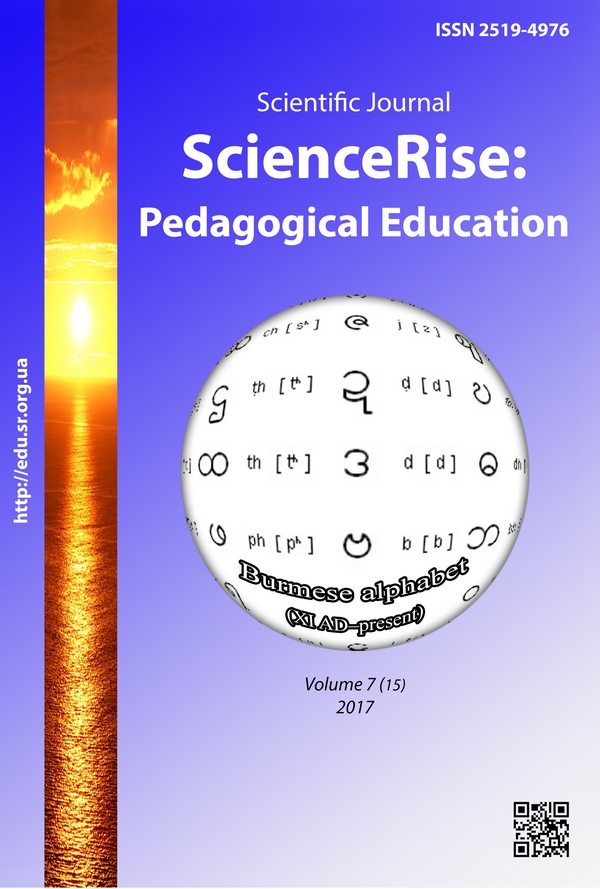Дослідження етапів професіоналізації народно-сценічної хореографії в історико-культурній динаміці
DOI:
https://doi.org/10.15587/2519-4984.2017.107968Ключові слова:
хореографія, народно-сценічний танець, професіоналізація танцю, хореографічна освіта, хореографічна педагогікаАнотація
Досліджено основні етапи динаміки професіоналізації української народно-сценічної хореографії у контексті культуроґенезу танцювального мистецтва. Уточнено сутність категорій «народний танець», «характерний танець», «народно-сценічний танець», проаналізовано їх змістовий взаємозв’язок та визначено динаміку змін у формуванні тезаурусу галузі. На основі системного дослідження етнографічних першоджерел української хореографії визначено історико-культурні та мистецькі детермінанти, естетико-теоретичні засади розвитку народного танцю як феномену професійної діяльності й об’єкта педагогічної рефлексії
Посилання
- Grigorovich, Yu. N. (Ed.) (1981). Ballet: an encyclopedia. Moscow: Soviet Encyclopedia, 623.
- Suryts, E. Ya.; Slonymskyi, Yu. Y. (Ed.) (1966). All about ballet. Moscow-Leningrad: Muzyka. Lening. otd-nye, 455.
- Slonymskyi, Yu. O. (1939). The way of characteristic dance. The basis of characteristic dance. Moscow: Iskusstvo, 3–33.
- Vasylenko, K. Yu. (1996). Vocabulary of Ukrainian folk-stage dance. Kyiv: Mystecztvo, 496.
- Vasylenko, K. Yu. (1997). Ukrainian dance. Kyiv: IPK PK, 282.
- Gumenyuk, A. I. (1963). Folk choreographic art of Ukraine. Kyiv: AN URSR, 236.
- Rudnytska, O. P. (2000). Ukrainian art in multicultural space. Kyiv: EksОb, 208.
- Horbatova, N. O. (2004). Stanovlennya mystecztva klasychnogo tancyu v Ukrayiny (20-30-ti r r. XX st.) [The formation of the art of classical dance in Ukraine (20-30th years of ХXth century)]. Kyiv, 18.
- Verkhovynets, V. M. (1990). Theory of Ukrainian folk dance. Kyiv: Mus. Ukraine, 152.
- Blagova, T. O. (2015). Formuvannya teoriyi ukrayinskoyi narodnoyi khoreografiyi v istoryko-kulturologichnomu vymiri [The formation of a theory of Ukrainian folk dance in historical and cultural dimension]. Science and Education a New Dimension: Humanities and Social Sciences, 3 (59), 27–30.
##submission.downloads##
Опубліковано
Як цитувати
Номер
Розділ
Ліцензія
Авторське право (c) 2017 Tetyana Blagova Blagova

Ця робота ліцензується відповідно до Creative Commons Attribution 4.0 International License.
Наше видання використовує положення про авторські права Creative Commons CC BY для журналів відкритого доступу.
Автори, які публікуються у цьому журналі, погоджуються з наступними умовами:
1. Автори залишають за собою право на авторство своєї роботи та передають журналу право першої публікації цієї роботи на умовах ліцензії Creative Commons CC BY, котра дозволяє іншим особам вільно розповсюджувати опубліковану роботу з обов'язковим посиланням на авторів оригінальної роботи та першу публікацію роботи у цьому журналі.
2. Автори мають право укладати самостійні додаткові угоди щодо неексклюзивного розповсюдження роботи у тому вигляді, в якому вона була опублікована цим журналом (наприклад, розміщувати роботу в електронному сховищі установи або публікувати у складі монографії), за умови збереження посилання на першу публікацію роботи у цьому журналі.









